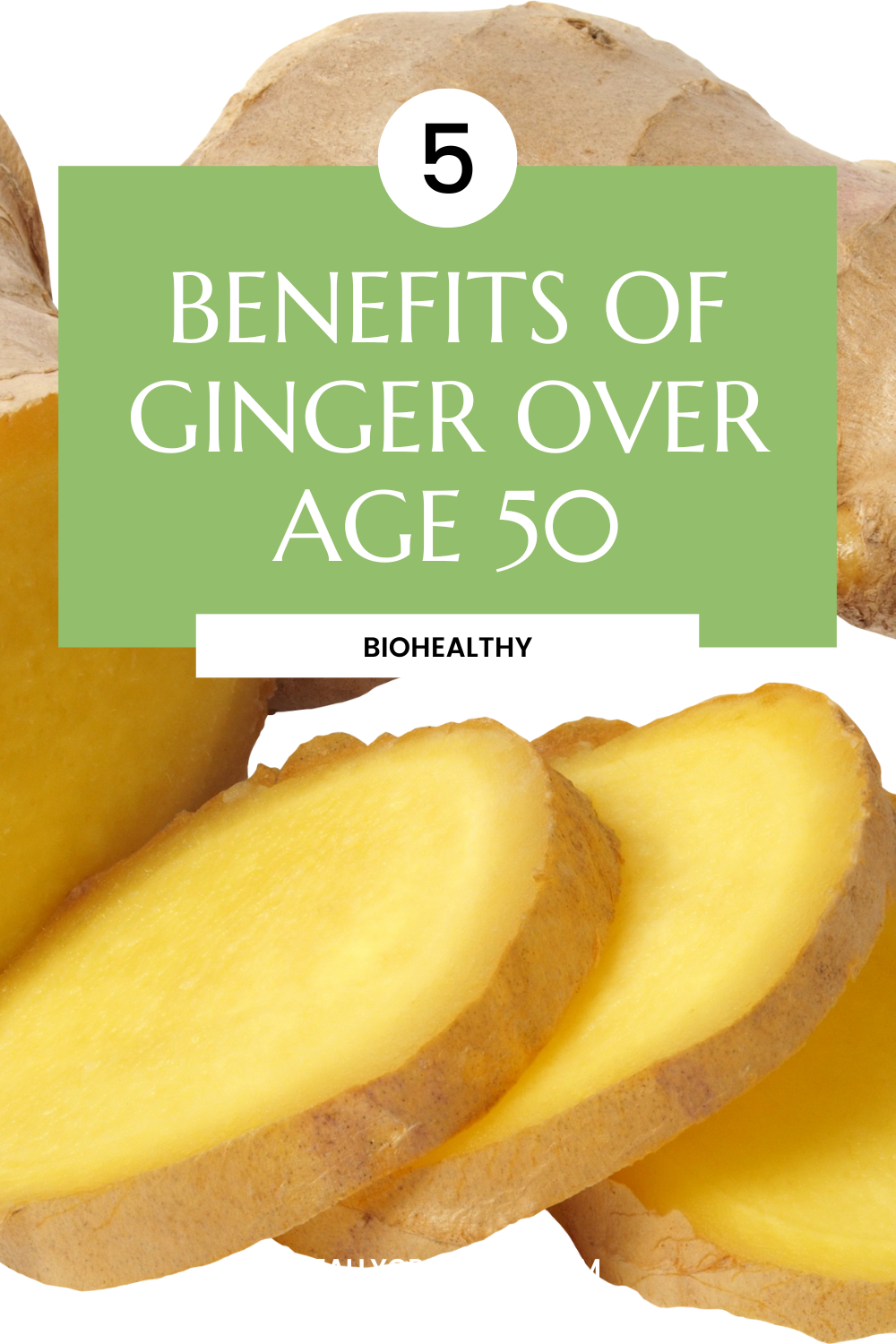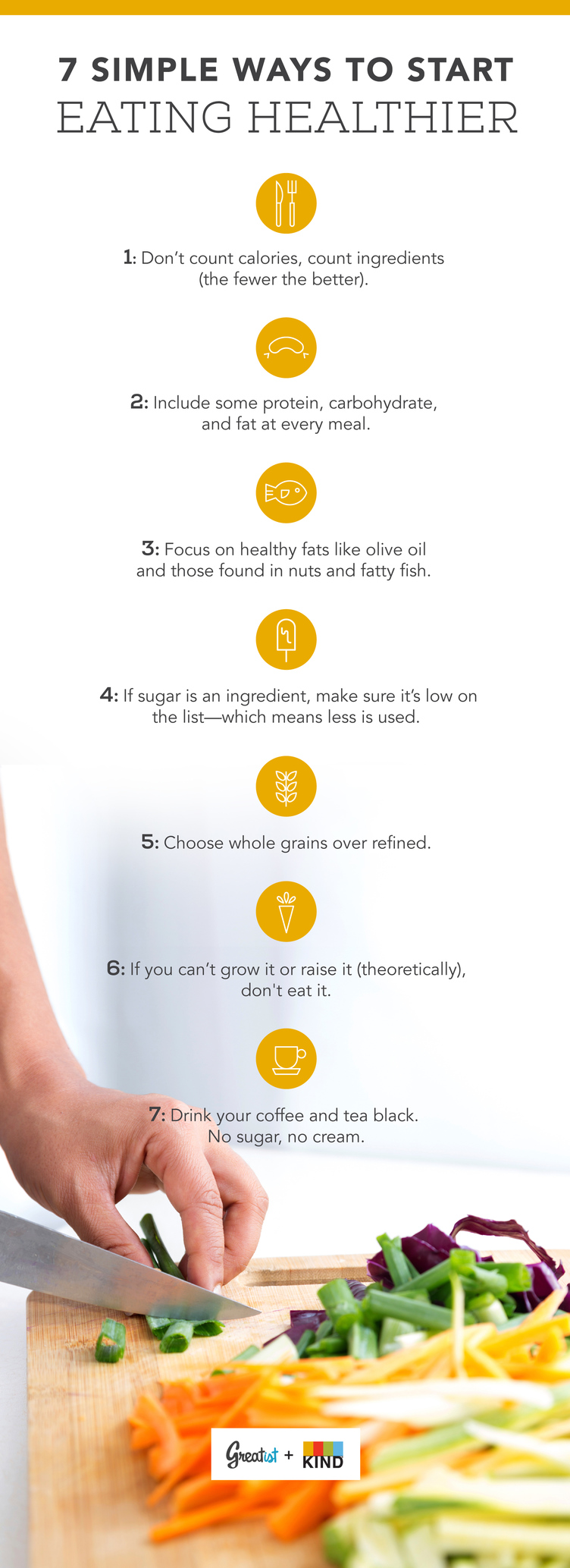Combat Inflammation and More: A Deep Dive into Ginger’s Benefits
In the annals of human history, few plants have commanded as much reverence and widespread use as ginger. From the bustling spice markets of ancient Asia to the modern laboratories of nutritional science, Zingiber officinale has traversed millennia, not merely as a culinary delight, but as a potent medicinal marvel. It is a story woven into the fabric of traditional medicine systems worldwide – Ayurvedic, Chinese, Unani – where its fiery warmth was a beacon of healing. Today, as we navigate an increasingly complex health landscape, ginger emerges once again, not as a relic of the past, but as a vanguard against one of the most pervasive threats to modern well-being: chronic inflammation.
This is more than just an article; it’s an expedition into the heart of ginger’s power, unraveling the intricate mechanisms behind its anti-inflammatory prowess and illuminating the myriad other ways it champions our health. For the knowledgeable seeker of wellness, this journey will reveal ginger not just as a spice, but as a sophisticated pharmaceutical agent gifted by nature, a testament to the profound wisdom embedded in the botanical world.
The Silent Scourge: Understanding Inflammation
To truly appreciate ginger’s genius, we must first understand the adversary it so effectively confronts: inflammation. Often misunderstood, inflammation is a double-edged sword. Acute inflammation is a vital, protective response – the body’s rapid reaction to injury or infection. It’s the redness, swelling, heat, and pain that signal healing is underway, clearing debris and warding off pathogens. This acute phase is a marvel of biological defense, designed to resolve quickly once the threat is neutralized.
However, when this protective fire refuses to extinguish, it transforms into chronic inflammation – a silent, insidious force that gnaws at the foundations of health. Unlike its acute counterpart, chronic inflammation is a low-grade, persistent state of immune activation that can linger for months or years, slowly damaging tissues and organs. It doesn’t always announce itself with dramatic symptoms, often manifesting as subtle fatigue, brain fog, digestive issues, or persistent aches.
The modern world, unfortunately, has become a fertile ground for chronic inflammation. Our diets, often rich in processed foods, refined sugars, and unhealthy fats, act as continuous inflammatory triggers. Sedentary lifestyles, chronic stress, environmental toxins, disrupted sleep patterns, and an imbalanced gut microbiome all contribute to a systemic inflammatory burden.
The consequences are dire. Chronic inflammation is no longer seen merely as a symptom but as a root cause, or at least a significant contributor, to a vast array of debilitating diseases:
- Autoimmune diseases: Rheumatoid arthritis, lupus, inflammatory bowel disease (Crohn’s, ulcerative colitis).
- Cardiovascular diseases: Atherosclerosis, hypertension.
- Metabolic disorders: Type 2 diabetes, obesity, metabolic syndrome.
- Neurodegenerative diseases: Alzheimer’s, Parkinson’s (neuroinflammation).
- Certain cancers: Chronic inflammation can fuel tumor growth and progression.
- Mood disorders: Depression, anxiety.
- Respiratory conditions: Asthma, chronic obstructive pulmonary disease (COPD).
In essence, chronic inflammation is a systemic breakdown, a body constantly on high alert, firing its defensive mechanisms without a clear enemy, ultimately turning on itself. This grim reality underscores the urgent need for effective, sustainable, and natural strategies to quell this destructive fire. And this is precisely where ginger steps into the spotlight.
Ginger Enters the Ring: The Anti-Inflammatory Champion
The story of ginger’s anti-inflammatory power begins not with a single compound, but with a symphony of bioactive constituents working in concert. While the plant contains over 400 compounds, it is primarily the pungent phenolic compounds – gingerols, shogaols, and zingerone – that are credited with its most profound medicinal effects. Fresh ginger is rich in gingerols, while drying and cooking convert some gingerols into shogaols, which are even more potent.
These compounds don’t just "reduce inflammation" in a vague sense; they engage in a sophisticated molecular dance, targeting multiple pathways involved in the inflammatory cascade. This multi-pronged approach is what makes ginger so effective and, in many ways, superior to single-target pharmaceutical drugs which often come with a host of side effects.
The Molecular Mechanisms Unveiled:
-
Inhibition of Pro-inflammatory Enzymes (COX-2 and LOX): This is perhaps ginger’s most well-known anti-inflammatory mechanism, drawing parallels to non-steroidal anti-inflammatory drugs (NSAIDs). Gingerols and shogaols have been shown to inhibit the activity of cyclooxygenase-2 (COX-2) and lipoxygenase (LOX) enzymes. COX-2 is responsible for producing pro-inflammatory prostaglandins, while LOX produces leukotrienes – both key mediators of inflammation, pain, and fever. Unlike many NSAIDs, which can also inhibit COX-1 (leading to gastric side effects), ginger appears to have a more selective action, offering similar benefits with a potentially safer profile for the gut.
-
Suppression of NF-κB Activation: Nuclear factor-kappa B (NF-κB) is a master regulator of inflammation. When activated, NF-κB translocates into the cell nucleus and switches on genes that produce a wide array of pro-inflammatory cytokines, chemokines, and enzymes. Ginger’s active compounds significantly inhibit NF-κB activation, effectively shutting down a central command center for inflammatory responses. This mechanism is crucial for mitigating chronic inflammation at its source.
-
Reduction of Pro-inflammatory Cytokines: Cytokines are signaling molecules that mediate and regulate immunity and inflammation. Pro-inflammatory cytokines like Tumor Necrosis Factor-alpha (TNF-α), Interleukin-1 beta (IL-1β), and Interleukin-6 (IL-6) are elevated in chronic inflammatory conditions. Gingerols and shogaols have been demonstrated to reduce the production and release of these cytokines, thereby dampening the inflammatory signal throughout the body.
-
Potent Antioxidant Activity: Inflammation and oxidative stress are inextricably linked, forming a vicious cycle. Oxidative stress, caused by an imbalance between free radicals and antioxidants, can trigger and exacerbate inflammatory responses. Ginger is a powerful antioxidant, thanks to its high content of phenolic compounds. These compounds scavenge free radicals, neutralize reactive oxygen species (ROS), and enhance the body’s endogenous antioxidant defense systems. By mitigating oxidative stress, ginger breaks a critical link in the inflammatory chain.
-
Modulation of Nitric Oxide (NO) Production: While nitric oxide plays beneficial roles in the body, excessive production of inducible nitric oxide synthase (iNOS) can lead to the formation of peroxynitrite, a highly damaging free radical that fuels inflammation and tissue damage. Ginger has been shown to inhibit iNOS expression, thereby reducing excessive NO production and its inflammatory consequences.
Targeting Specific Inflammatory Conditions:
The scientific literature is replete with studies supporting ginger’s efficacy across a spectrum of inflammatory disorders:
-
Osteoarthritis (OA) and Rheumatoid Arthritis (RA): These debilitating conditions are characterized by chronic joint inflammation. Numerous studies, including human clinical trials, have shown that ginger extracts can significantly reduce pain, stiffness, and improve physical function in individuals with OA and RA. Its ability to inhibit COX-2 and reduce inflammatory cytokines is particularly beneficial here, offering a natural alternative or adjunct to conventional pain management.
-
Muscle Pain and DOMS (Delayed Onset Muscle Soreness): For athletes and fitness enthusiasts, ginger offers a natural remedy for post-exercise muscle soreness. Studies suggest that daily ginger consumption can significantly reduce exercise-induced muscle pain, likely due to its anti-inflammatory effects on muscle tissue and its ability to mitigate the inflammatory response to micro-damage.
-
Inflammatory Bowel Disease (IBD): Conditions like Crohn’s disease and ulcerative colitis involve chronic inflammation of the digestive tract. While research is still evolving, preclinical studies and some human trials suggest ginger may help reduce intestinal inflammation, protect the gut lining, and alleviate symptoms, primarily through its NF-κB inhibitory and antioxidant properties. However, more extensive human trials are needed.
-
Asthma and Respiratory Inflammation: Ginger’s anti-inflammatory and bronchodilatory properties offer potential relief for respiratory conditions. It can help relax airway smooth muscles, reduce inflammation in the bronchi, and inhibit allergic responses, making breathing easier.
-
Periodontal Disease: Inflammation of the gums and supporting structures of the teeth is a common problem. Ginger’s antibacterial and anti-inflammatory compounds can help reduce gum inflammation and combat the bacteria responsible for periodontal disease.
In essence, ginger doesn’t just mask symptoms; it addresses the underlying inflammatory processes, offering a holistic and sustainable path to relief and healing.
Beyond Inflammation: Ginger’s Multifaceted Marvels
While its anti-inflammatory prowess is arguably its most celebrated attribute, ginger is a true polymath in the realm of natural medicine, offering a dizzying array of benefits that extend far beyond simply quelling inflammation. Its bioactive compounds interact with countless physiological systems, making it a powerful ally for overall health and well-being.
1. The Digestive Dynamo:
Ginger’s ancient reputation as a digestive aid is well-earned and scientifically validated.
- Nausea and Vomiting: Perhaps its most famous use, ginger is a remarkably effective antiemetic. It works by stimulating gastric motility, helping to empty the stomach, and by acting on serotonin receptors in the gut and brain, which play a role in the nausea reflex. It’s highly effective for motion sickness, morning sickness during pregnancy (under medical supervision), and even chemotherapy-induced nausea.
- Indigestion (Dyspepsia): Ginger helps relieve discomfort, bloating, and gas by stimulating digestive enzymes and accelerating gastric emptying, preventing food from lingering too long in the stomach.
- Bloating and Gas: Its carminative properties help relax the muscles of the digestive tract, allowing trapped gas to escape more easily.
- Gut Microbiome: Emerging research suggests ginger may positively influence the gut microbiome, fostering a healthier balance of bacteria, which is crucial for digestive health and immune function. It also helps protect the gut lining from damage.
2. Cardiovascular Guardian:
Ginger offers several mechanisms to support heart health.
- Cholesterol Reduction: Studies have shown that ginger can help lower levels of LDL ("bad") cholesterol and triglycerides, while potentially increasing HDL ("good") cholesterol.
- Blood Pressure Regulation: It exhibits mild hypotensive effects by promoting vasodilation and influencing calcium channels, contributing to healthier blood pressure levels.
- Anti-Platelet Effects: Ginger contains compounds that can inhibit platelet aggregation, similar to aspirin, potentially reducing the risk of blood clots. This is an important point for individuals on blood-thinning medications, necessitating caution and medical consultation.
- Improved Circulation: Its warming properties are not just a sensation; ginger genuinely enhances blood flow throughout the body.
3. Metabolic Maestro:
For those grappling with metabolic challenges, ginger presents intriguing possibilities.
- Blood Sugar Control: Research indicates that ginger can improve insulin sensitivity and reduce fasting blood sugar levels. It appears to enhance glucose uptake by muscle cells and regulate carbohydrate metabolism, offering promise for individuals with type 2 diabetes or prediabetes.
- Weight Management: Ginger has thermogenic properties, meaning it can slightly increase metabolism and calorie burning. It also promotes feelings of satiety, potentially reducing overall calorie intake. Its anti-inflammatory effects can also help combat the chronic low-grade inflammation often associated with obesity.
4. Brain Booster and Pain Reliever:
Ginger’s influence extends to the central nervous system.
- Neuroprotective Properties: Through its potent antioxidant and anti-inflammatory actions, ginger helps protect brain cells from damage, potentially reducing the risk of neurodegenerative diseases.
- Cognitive Function: Preliminary studies suggest ginger may enhance cognitive function, including memory and attention, particularly in middle-aged women.
- Migraine Relief: Historically used for headaches, some studies indicate ginger can be as effective as conventional drugs in reducing migraine pain and associated nausea, likely due to its anti-inflammatory and anti-emetic effects.
- General Pain Relief: Beyond inflammatory pain, ginger exhibits direct analgesic (pain-relieving) properties, making it a broad-spectrum natural pain reliever.
5. Cancer Combatant (Emerging Research):
While this area requires much more research and should never be seen as a cure, ginger’s potential in cancer prevention and complementary therapy is generating significant interest.
- Apoptosis Induction: Gingerols and shogaols have been shown to induce programmed cell death (apoptosis) in various cancer cell lines, leaving healthy cells unharmed.
- Anti-angiogenesis: It can inhibit the formation of new blood vessels that tumors need to grow and spread.
- Chemo-preventive Potential: Studies, particularly on colon, ovarian, and prostate cancers, suggest ginger may help prevent the initiation and progression of certain cancers. It is crucial to reiterate that ginger is not a cancer treatment, but its compounds offer promising avenues for further research and potential adjunct therapies.
6. Immune System Support:
Ginger is a powerful immune modulator, not just a stimulant.
- Antiviral and Antibacterial: It exhibits broad-spectrum antimicrobial properties, helping the body fight off various infections, particularly those affecting the respiratory system.
- Balanced Immune Response: Instead of simply boosting the immune system, ginger helps to balance it, reducing overactive inflammatory responses while enhancing appropriate defensive actions.
Harnessing Ginger’s Power: Practical Applications & Considerations
Integrating ginger into your daily routine is both delicious and beneficial. Its versatility means there are numerous ways to enjoy its healing properties.
Forms of Ginger:
- Fresh Root: The most potent form. Grate it into stir-fries, soups, smoothies, or steep slices in hot water for tea.
- Dried/Powdered: Convenient for cooking, baking, and capsules. Note that drying converts some gingerols to shogaols, which are more pungent and potentially more potent in some respects.
- Ginger Tea: A classic remedy for nausea and inflammation. Use fresh slices or powdered ginger.
- Ginger Essential Oil: Used topically for muscle aches or aromatically for nausea. Always dilute essential oils and perform a patch test.
- Supplements/Tinctures: Standardized extracts offer a consistent dose of active compounds, ideal for therapeutic use.
Dosage Recommendations:
General recommendations vary based on the condition and individual.
- For general health and digestion: 1-2 grams of fresh ginger root daily (about a 1-inch piece).
- For nausea: 1-2 grams of fresh ginger or 250-500 mg of powdered ginger, 2-4 times daily.
- For inflammatory conditions (e.g., arthritis): 1-4 grams of fresh ginger or 500-1000 mg of standardized extract daily, often divided into multiple doses.
- Always start with lower doses and gradually increase as tolerated.
Culinary Uses:
Ginger is a culinary chameleon.
- Asian Cuisine: Essential in curries, stir-fries, marinades, and sushi.
- Baking: Gingerbread, ginger snaps, fruit crumbles.
- Beverages: Ginger ale (homemade is best), ginger beer, smoothies, lemonades.
- Dressings and Sauces: Adds a zesty kick to vinaigrettes and dips.
Safety and Side Effects:
Ginger is generally recognized as safe (GRAS) by regulatory bodies when consumed in moderate amounts.
- Mild side effects: Heartburn, stomach upset, diarrhea, or gas can occur, especially with very high doses or on an empty stomach.
- Pregnancy: While often used for morning sickness, pregnant women should consult their doctor before using ginger supplements, especially in high doses.
- Gallstones: Individuals with gallstones should exercise caution as ginger can stimulate bile production.
Drug Interactions (Crucial!):
This is where informed knowledge becomes paramount. Ginger can interact with certain medications:
- Anticoagulants (Blood Thinners): Due to its anti-platelet effects, ginger can increase the risk of bleeding when taken with medications like warfarin, aspirin, or clopidogrel.
- Diabetes Medications: Ginger can lower blood sugar, potentially enhancing the effects of antidiabetic drugs and leading to hypoglycemia.
- Blood Pressure Medications: Its mild hypotensive effects could add to the effects of antihypertensive drugs, potentially causing blood pressure to drop too low.
Always, without exception, consult a healthcare professional before starting ginger supplementation, especially if you are on medication or have underlying health conditions.
Quality Matters:
Choose organic ginger whenever possible to avoid pesticide residues. When purchasing supplements, opt for reputable brands that provide third-party testing and standardization of active compounds.
Conclusion: A Timeless Ally in the Quest for Wellness
Our journey through the world of ginger has revealed a plant of extraordinary depth and versatility. From its ancient origins as a revered spice and medicine to its modern scientific validation, ginger stands as a powerful testament to nature’s healing intelligence. Its story is one of resilience, efficacy, and profound impact on human health.
At the core of its therapeutic prowess lies its remarkable ability to combat inflammation – that silent, pervasive threat that underpins so many chronic diseases of our time. By engaging with the inflammatory cascade at multiple molecular levels, ginger offers a sophisticated, natural, and sustainable solution to quell the destructive fires within.
But ginger’s narrative doesn’t end there. It extends to the very foundations of well-being: bolstering digestion, guarding the cardiovascular system, balancing metabolism, sharpening the mind, and supporting immune function. It is a true adaptogen, helping the body navigate the stresses of modern life and restore equilibrium.
As we conclude this deep dive, the message is clear: ginger is more than just a root; it is a profound ally in our ongoing quest for optimal health. It reminds us that sometimes, the most potent remedies are found not in complex pharmaceuticals, but in the simple, elegant wisdom of the natural world. By thoughtfully integrating ginger into our daily lives, guided by knowledge and mindful consideration, we can harness its timeless power to combat inflammation, enhance vitality, and embark on a more vibrant, healthier future. The fiery kiss of ginger, it turns out, is a kiss of life itself.






